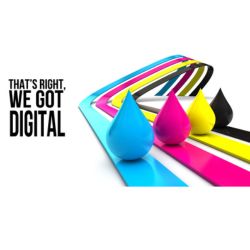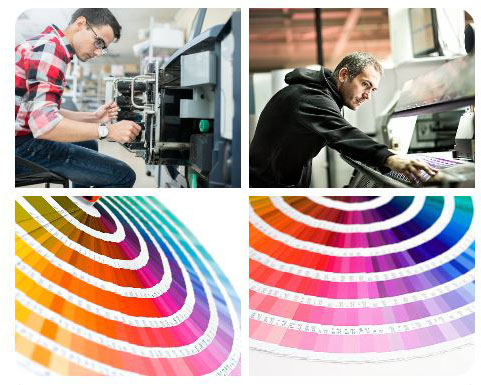Digital Printing
What is digital printing?
Digital printing refers to the process of printing digital files directly onto various substrates, such as paper, fabric, plastic, or even metal, using a digital printer. It is a modern alternative to traditional printing methods like offset printing, which requires the creation of printing plates.
Digital printing offers several advantages over traditional printing methods. Here are some key features and benefits of digital printing:
Quick turnaround time: Digital printing eliminates the need for time-consuming setup processes like plate creation, making it ideal for projects that require fast turnaround times. The files can be sent directly to the printer, reducing production time significantly.
Variable data printing: Digital printing allows for personalized and customized printing. Each printed piece can be unique, making it useful for applications like direct mail campaigns, promotional materials, or personalized products.
Cost-effective for short runs: Digital printing is cost-effective for small to medium-sized print runs. Unlike traditional printing methods, there are no setup costs associated with plates, making it more affordable for smaller quantities.
High-quality output: Digital printing offers excellent print quality, with sharp and vibrant images. Modern digital printers use advanced inkjet or laser technologies that can reproduce intricate details and colors accurately.
Versatility: Digital printing can be used on a wide range of materials, including paper, cardboard, vinyl, fabric, and more. It allows for printing on various sizes and thicknesses, opening up opportunities for diverse applications.
On-demand printing: With digital printing, you can produce prints on-demand as needed, reducing inventory costs and the risk of obsolescence. This is especially beneficial for businesses that frequently update their marketing materials or need to accommodate changing demands.
Environmentally friendly: Digital printing is more eco-friendly compared to traditional printing methods. It generates less waste, as there is no need for excess materials or chemicals used in plate creation and cleanup.
Digital printing has found applications in various industries, including advertising, marketing, packaging, textiles, photography, and more. It has revolutionized the print industry by providing cost-effective, versatile, and high-quality printing solutions for businesses and individuals alike.
What is the difference between printing and digital printing?
The main difference between printing and digital printing lies in the process and technology used.
Process: Traditional printing, such as offset printing, involves the creation of printing plates. These plates transfer the ink onto the printing surface, such as paper, through a series of rollers. Digital printing, on the other hand, involves directly transferring the digital file onto the printing surface without the need for plates.
Setup time: Traditional printing requires significant setup time, as it involves creating and preparing the printing plates. This setup process can be time-consuming and costly, particularly for small print runs. Digital printing, however, eliminates the need for plate creation and setup, allowing for faster production times.
Cost-effectiveness: Traditional printing methods like offset printing are more cost-effective for large print runs. The cost per unit decreases as the quantity increases. Digital printing, on the other hand, is more cost-effective for smaller print runs because there are no setup costs involved. Each print can be different, making it ideal for personalized or short-run printing.
Customization: Digital printing enables high levels of customization and personalization. Each printed piece can be unique, allowing for variable data printing. Traditional printing methods are less flexible in this regard since the plates are typically designed for a specific print job and cannot be easily modified.
Quality and Color Accuracy: Both traditional and digital printing can produce high-quality prints. However, digital printing offers precise color matching and accuracy. Digital printers use advanced color management systems that can reproduce intricate details and vibrant colors more consistently.
Substrate Versatility: Digital printing offers greater versatility in terms of the materials that can be printed on. It can handle various substrates such as paper, cardboard, fabric, plastic, and metal. Traditional printing methods are more limited in terms of the materials they can accommodate.
Speed and Turnaround Time: Digital printing is generally faster than traditional printing methods, especially for small to medium-sized print runs. With digital printing, files can be sent directly to the printer, reducing the setup time. Traditional printing methods require more time for plate creation and setup, resulting in longer turnaround times.
Overall, digital printing offers advantages such as quicker turnaround times, cost-effectiveness for short runs, customization options, and better color accuracy. Traditional printing methods are still preferred for large-scale print runs or projects that require specific finishes or special inks. The choice between printing methods depends on factors such as budget, quantity, customization requirements, and the desired final product.
()likes


